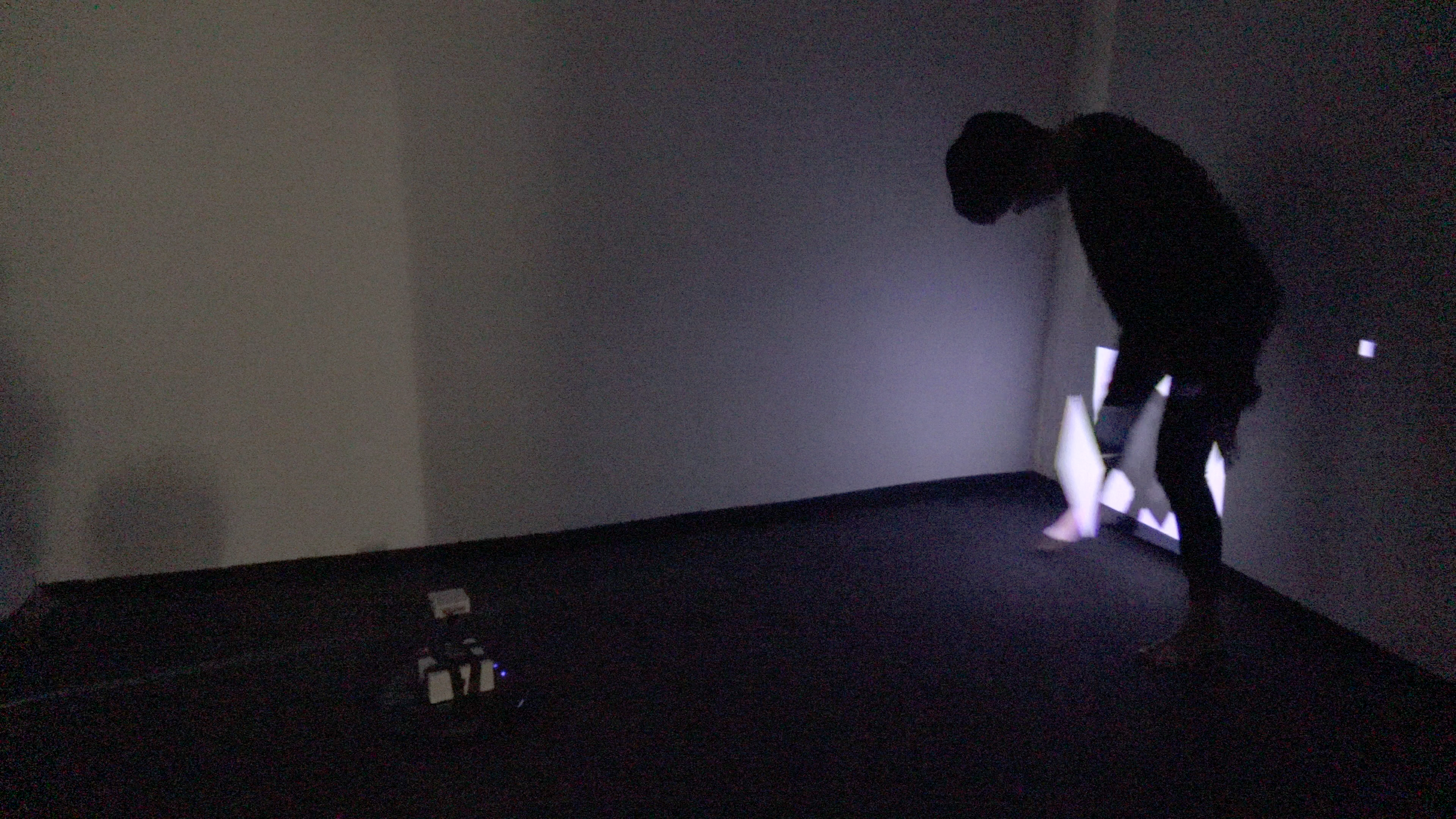The performance began with a question on the fixed installation style of projector and screen. I attempt to find an alternative through the experiment of adding body movement to the video installation.
#1 project-ed/ing (three by one)

projected/ing (three by one), performance, 04:46, 2016
I
am addressed by three names : twitter, radio, given name. I collected the data that captured
these three identities. Based on these three identities, I made a video composed
of three screens. Not knowing the content of the video they are projecting,
participants wear a projector on their waist and project the video of the
artist performing. Participants can control and watch the videos projected on
the small screens strapped onto the artist’s body.
Here, which part of the artist’s identity would be revealed or hidden depends not only on the body movement of the performer (the artist), but also depends on the action of participants who are responsible for the projections. The video shows information on all three identities, but a stable and whole projection is impossible because of the unpredictable movements of the small screens on the artist’s arms, legs, and head. The participants take an active role in deciding how much information would be shown to the audience, and adjusting the focus and distance of the projection. Therefore, the artist’s identity is revealed by the interaction of participants, audience, and the artist.
Here, which part of the artist’s identity would be revealed or hidden depends not only on the body movement of the performer (the artist), but also depends on the action of participants who are responsible for the projections. The video shows information on all three identities, but a stable and whole projection is impossible because of the unpredictable movements of the small screens on the artist’s arms, legs, and head. The participants take an active role in deciding how much information would be shown to the audience, and adjusting the focus and distance of the projection. Therefore, the artist’s identity is revealed by the interaction of participants, audience, and the artist.
performance, video documentation
4min, 46sec
2016
4min, 46sec
2016






#2 project-ed/ing (with robot cleaner)

Unlike project-ed/ing
(three by one), this work
minimizes the role of video. It concentrates more on the relationship between the projector and the screen. A white
cube is projected by the projector that is attached to a robot cleaner. The
artist who is performing tries to align the small screen on his body (the
ankle) with the white cube projection. Unlike human participants, the robot
cleaner has irregular movements and does not consider the proper distance and
position between two entities. The human performer must keep checking if the
screen on his body aligns with the video projection and move quickly, following
the robot’s movement. The artist is dragged by the machine in the situation he
designed, and he literally has to keep running in order to present his work.
performance, video documentation
2017
2017



